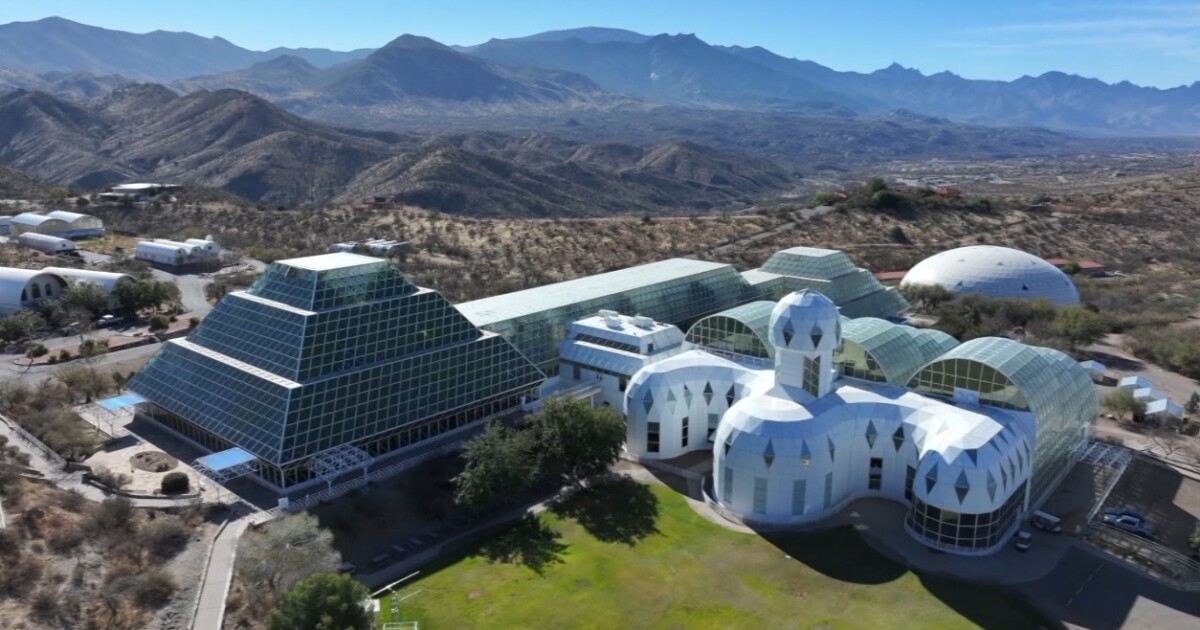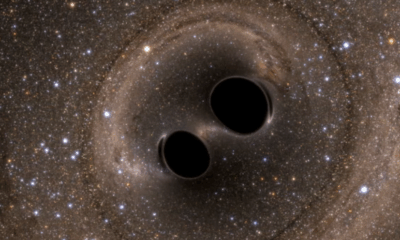Science
Biosphere 2: A 35-Year Journey of Innovative Research

Biosphere 2, originally launched in September 1991 as an ambitious experiment involving eight scientists, has evolved into a cutting-edge research facility. Nearly 35 years after its inception, the facility continues to provide vital insights into Earth’s systems and environmental challenges.
When Biosphere 2 was first sealed, the world watched with intrigue. The event marked a pioneering step in understanding ecosystems and the potential for human life in space. According to Mark Horner, a reporter from KGUN 9, the moment was monumental: “All eight inside Biosphere 2. The hatch sealed for two years.” This project was financed by billionaire Ed Bass at a cost of $150 million, representing a significant investment in ecological and space research.
Understanding Earth’s Systems through Innovative Design
The structure itself is an engineering marvel, covering over three acres with a diverse range of biomes, including a rainforest, ocean, savanna, mangrove, and desert. John Adams, the current deputy director of Biosphere 2, explained that the facility was designed to enhance understanding of Earth’s systems, which they refer to as Biosphere 1. Construction began in 1987 and was completed by 1991, setting the stage for a comprehensive experiment.
During the initial mission, the crew faced numerous challenges, including dangerously low oxygen levels due to an imbalance between plants and soil. Despite a productive agricultural system, the team struggled to sustain adequate nutrition and dealt with interpersonal conflicts. When the project concluded, some critics labeled it a failure. However, Adams refutes this claim, asserting, “Biosphere 2 was absolutely not a failure. In fact, it’s still here being used for cutting-edge research by the University of Arizona.”
In 2011, the University of Arizona took over the facility and continues to explore essential environmental questions. One notable project is the Landscape Evolution Observatory, which investigates how water availability is affected by changes in landscape. “Specifically, it rains in the mountains,” Adams noted. “How much water ends up downstream for you and I to use?”
Reviving Ecosystems and Protecting Endangered Species
The rainforest biome, which once provided sustenance for the original crew, is now a site for scientific inquiry. Researchers recently simulated a drought by turning off the water supply for six weeks. Adams remarked on the impressive resilience of the ecosystem: “The rainforest bounced back incredibly well. In fact, it’s incredible how dense the vegetation has gotten since we brought it out of that drought.”
Adjacent to the rainforest, the ocean biome, which holds approximately one million gallons of water, is also a focal point for research. Here, scientists study the effects of rising temperatures and carbon dioxide on coral and marine life. This ongoing research is vital for understanding future impacts on oceanic ecosystems.
In a further demonstration of Biosphere 2’s commitment to conservation, the facility recently released endangered Sonoyta pupfish into a newly completed stream environment within the desert biome. Joaquin Ruiz, the director of Biosphere 2, expressed enthusiasm about this initiative, stating, “We are becoming a safe haven for a species of fish that is endangered.” The critically endangered pupfish, once widespread, now exists primarily in the southwest region of Organ Pipe National Monument, highlighting the importance of innovative conservation efforts.
Biosphere 2 stands as a testament to human ingenuity and the ongoing quest to understand our planet. As research continues, the facility remains a vital resource for education, outreach, and innovative solutions to environmental challenges. Its legacy of exploration and resilience proves that, even after 35 years, the facility is still making an impact on how we comprehend and protect our ecosystems.
-

 Technology4 months ago
Technology4 months agoDiscover the Top 10 Calorie Counting Apps of 2025
-

 Health2 months ago
Health2 months agoBella Hadid Shares Health Update After Treatment for Lyme Disease
-

 Health3 months ago
Health3 months agoErin Bates Shares Recovery Update Following Sepsis Complications
-

 Technology3 weeks ago
Technology3 weeks agoDiscover 2025’s Top GPUs for Exceptional 4K Gaming Performance
-

 Technology4 months ago
Technology4 months agoDiscover How to Reverse Image Search Using ChatGPT Effortlessly
-

 Technology2 months ago
Technology2 months agoElectric Moto Influencer Surronster Arrested in Tijuana
-

 Technology4 months ago
Technology4 months agoMeta Initiates $60B AI Data Center Expansion, Starting in Ohio
-

 Technology4 months ago
Technology4 months agoRecovering a Suspended TikTok Account: A Step-by-Step Guide
-

 Health4 months ago
Health4 months agoTested: Rab Firewall Mountain Jacket Survives Harsh Conditions
-

 Lifestyle4 months ago
Lifestyle4 months agoBelton Family Reunites After Daughter Survives Hill Country Floods
-

 Technology3 months ago
Technology3 months agoUncovering the Top Five Most Challenging Motorcycles to Ride
-

 Technology4 weeks ago
Technology4 weeks agoDiscover the Best Wireless Earbuds for Every Lifestyle




















